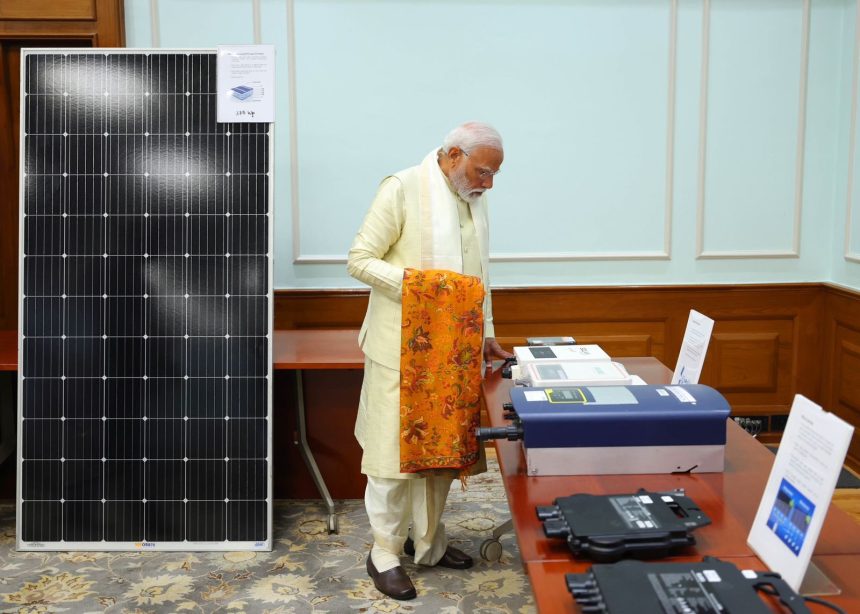Following his triumphant return from the big Ram Mandir opening event in Ayodhya, Prime Minister Narendra Modi made a momentous announcement: the “Pradhanmantri Suryoday Yojana” was launched, an ambitious initiative that aims to install solar rooftop systems on one crore residences in India. This bold choice, hailed as his “first big decision” after the Ayodhya incident, has the potential to drastically alter India’s energy sector while simultaneously addressing serious environmental issues.
Lighting Up Rural Houses:
Particularly targeted at rural households—many of whom lack access to inexpensive, dependable electricity—is the Pradhanmantri Suryoday Yojana. By outfitting these households with solar panels, the government hopes to supply them with sustainable electricity, minimize dependency on the national grid, and empower them with energy independence. Envision rural families living in a world where the abundance of the sun illuminates their life, while their children study under the soothing glow of solar-powered lamps.
A Bet on Green Energy:
India’s aspirational climate objectives depend on a substantial transition to renewable energy sources. In this shift, solar electricity is essential because of its vast potential and little environmental effect. With its widespread implementation, the Suryoday Yojana is anticipated to greatly increase India’s ability to generate solar electricity, resulting in lower carbon emissions, cleaner air, and a more sustainable future.
Difficulties and Questions:
But there are a lot of obstacles in the way of this bold solar initiative. Installing solar panels on one crore homes in a variety of geographical locations presents enormous logistical challenges. Careful consideration must be given to issues with rooftop systems’ price, upkeep, and efficacy in rural areas. Furthermore, the program’s long-term viability depends on strong funding sources and effective local execution.
Going Above and Beyond, Into Action:
Although the Suryoday Yojana has great promise, it has to be carefully planned and carried out. To preserve the effectiveness of the solar systems, the government must guarantee openness, quality assurance procedures, and efficient technician training. Additional strategies to support the program’s success include interacting with nearby communities, offering financial aid, and setting up chances for microbusinesses.
A Glimmer of Hope:
Following Ayodhya, PM Modi’s solar bet has spurred a national debate on rural development, sustainability, and energy availability. Even if there are many obstacles along the way, the Suryoday Yojana is a brave start in the direction of a better future that is driven by the sun and the hopes of millions of people. In addition to lighting up houses, the accomplishment of this large-scale project will open the door for a more fair and environmentally friendly India.








